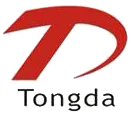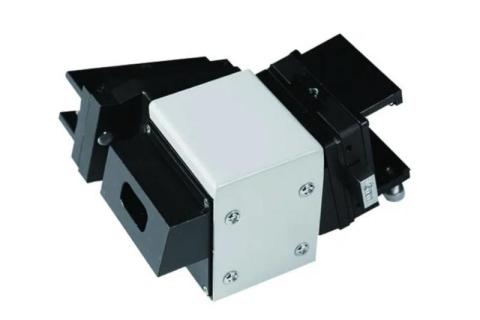
- Home
- >
News
The core function of the graphite curved crystal monochromator is to precisely filter out the desired Kα characteristic radiation from complex X-ray signals. This process is based on the Bragg diffraction principle, utilizing the precise arrangement and curved shape of the graphite crystal lattice to achieve selective transmission of X-rays. In practical applications, this component effectively eliminates interference from continuous X-rays, Kβ radiation, and fluorescent radiation generated by the sample itself. This filtering effect is particularly significant when analyzing samples containing elements such as manganese, iron, cobalt, and nickel using copper-target X-ray tubes. Dandong Tongda offers both graphite curved crystals and flat crystals. The use of graphite curved crystal monochromators can enhance the peak-to-background ratio, reduce background noise, improve the resolution of weak peaks, achieve a reflection efficiency of n ≥ 35%, and lower the diffraction angle of the diffractometer. The mosaic spread is ≤ 0.55°, and the crystal surface can be tilted by ±2°. These parameters ensure the stable performance of the instrument over long-term use. In X-ray analysis, the quality of data directly impacts the reliability of research conclusions. The graphite curved crystal monochromator significantly improves the quality of the collected signals by enhancing the peak-to-background ratio and reducing background noise. For diffractometer applications, this component also moderately lowers the diffraction angle, making weak peaks more distinct and improving the instrument's ability to resolve trace components. While this improvement may seem minor, it can play a critical role in key experiments. Application Value The graphite curved crystal monochromator demonstrates broad application value in environmental protection and electronics.It is suitable not only for fundamental research but also meets quality control and analytical needs in industrial production.By working in synergy with X-ray diffraction systems, this component provides reliable data support for materials science, chemical research, and industrial testing. When used in conjunction with copper-target X-ray tubes, it effectively addresses analytical challenges for a variety of sample types.
The graphite curved crystal monochromator used in X-ray diffractometers is a key component for selecting specific wavelengths of X-rays and removing unwanted radiation such as K β lines and fluorescent X-rays. The graphite curved crystal monochromator is a component installed in front of the X-ray detector, which monochromatizes the X-rays passing through the receiving slit and only detects the Kα characteristic X-rays in the X-ray spectrum. By using this device, continuous X-rays, K β characteristic X-rays, and fluorescent X-rays can be completely eliminated, enabling high signal-to-noise ratio X-ray diffraction analysis. When copper target X-ray tubes are used in conjunction with corresponding monochromators, fluorescent X-rays generated from Mn, Fe, Co, Ni based samples can be eliminated, making them suitable for analysis of various samples. working principle: Bragg diffraction: Based on Bragg's law, when X-rays are incident on a crystal at a certain angle, if 2dsin θ=n λ (where d is the interplanar spacing of the crystal, θis the incident angle, λ is the wavelength of the X-ray, and n is an integer), diffraction will occur. It utilizes this principle to adjust the orientation of the crystal so that only X-rays that meet specific conditions can pass through, thereby achieving the selection of X-ray wavelengths. Energy resolution: Due to the interplanar spacing and structural characteristics of graphite crystals, it can effectively distinguish X-rays of different energies. High energy resolution graphite curved crystal monochromator can further reduce unwanted radiation and improve the quality of diffraction data. Structural features: Curved shape: graphite curved crystal monochromator typically have a curved shape, which helps focus X-rays and improve diffraction efficiency. At the same time, the curved shape also helps to reduce the stress on the crystal, improve its stability and service life. High purity graphite: Graphite curved crystal monochromator is usually made of high-purity graphite materials to ensure their good diffraction performance and stability. High diffraction efficiency: It has a high diffraction efficiency, which can effectively select X-rays of the desired wavelength, thereby improving the quality of diffraction data. Wide wavelength range: It can operate over a wide wavelength range and is suitable for various types of X-ray diffraction experiments. Good stability: Due to the use of high-purity graphite material, it has good stability and a long service life. Application areas: Materials Science: In the field of materials science, X-ray diffractometers are widely used to study the crystal structure, phase composition, and other properties of materials. The graphite curved crystal monochromator, as an important component of X-ray diffractometer, provides important technical support for materials science research. Physics: In the field of physics, X-ray diffractometers are also used to study the microstructure and physical properties of matter. In summary, the graphite curved crystal monochromator used in X-ray diffractometers is an efficient and accurate X-ray selection and filtering device, providing important technical support for X-ray diffraction experiments.
The graphite curved crystal monochromator is installed in front of the X-ray detector, which monochromatizes the X-rays passing through the receiving slit and only detects the K α characteristic X-ray diffractometer accessories of the X-ray spectrum. By using this device, continuous X-rays, K β characteristic X-rays, and fluorescent X-rays can be completely eliminated, enabling high signal-to-noise ratio X-ray diffraction analysis. When copper target X-ray tubes are used in conjunction with corresponding monochromators, fluorescent X-rays generated from Mn, Fe, Co, Ni based samples can be eliminated, making them suitable for analysis of various samples.
The Graphite curved crystal monochromator is an important instrument accessory for X-ray diffraction analysis, mainly used to monochromatize the X-rays passing through the receiving slit, thereby improving the accuracy and signal-to-noise ratio of analysis. This monochromator utilizes the specific structure of graphite crystals to selectively reflect incident X-rays, allowing only X-rays of specific wavelengths (usually Kαcharacteristic X-rays) to pass through while filtering out other unwanted X-ray components such as continuous X-rays, Kβcharacteristic X-rays, and fluorescent X-rays. This selective reflection is based on Bragg's law, which states that when the angle between the incident light and the crystal plane satisfies certain conditions, coherent scattering occurs, forming diffraction peaks.When using this monochromator, attention should be paid to the preparation and placement of the sample to ensure the accuracy and symmetry of the diffraction peaks. Graphite curved crystal monochromator are widely used in materials research fields such as chemistry, chemical engineering, machinery, geology, minerals, metallurgy, building materials, ceramics, petrochemicals, and pharmaceuticals. In these fields, it is used for X-ray diffraction analysis to study the physical properties of materials such as crystal structure, phase transition, stress state, etc.X-ray diffractometer accessories significantly improves the accuracy and reliability of analysis by increasing the peak to background ratio and reducing background noise.
A monochromator is a component installed in front of an X-ray detector, which monochromatizes the X-rays passing through a receiving slit and only detects K α characteristic X-rays in the X-ray spectrum. By using this device, continuous X-rays, K β characteristic X-rays, and fluorescent X-rays can be completely eliminated, enabling high signal-to-noise ratio X-ray diffraction analysis. When copper target X-ray tubes are used in conjunction with corresponding monochromators, fluorescent X-rays generated from Mn, Fe, Co, Ni based samples can be eliminated, making them suitable for analysis of various samples. The use of graphite bent crystal monochromator can improve the peak to background ratio, reduce the background, enhance the resolution of weak peaks, achieve a reflection efficiency of n ≥ 35%, and reduce the diffraction angle of the diffractometer. Embedding degree ≤ 0.55; The crystal surface can tilt ± 2 degrees.
Dandong Tongda's graphite bent crystal monochromator enhances X-ray analysis accuracy with ≥35% reflectivity, eliminating interference like Kβ and fluorescence rays. It excels in environmental and electronics testing, backed by national R&D projects and ISO certification, offering precise solutions for complex samples.
The high-precision multifunctional angle measuring instrument of Tongda Technology can not only measure conventional powder samples, but also test liquid samples, colloidal samples, viscous samples, loose powders, and large solid samples.
X-ray diffraction is the most effective and most widely used means, and X-ray diffraction is the first method used by humans to study the microstructure of matter.









